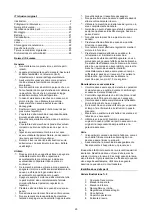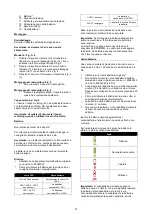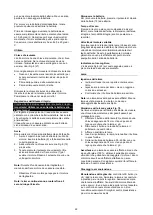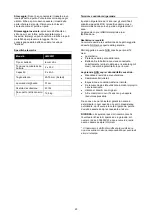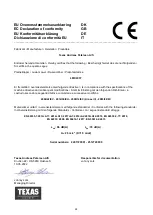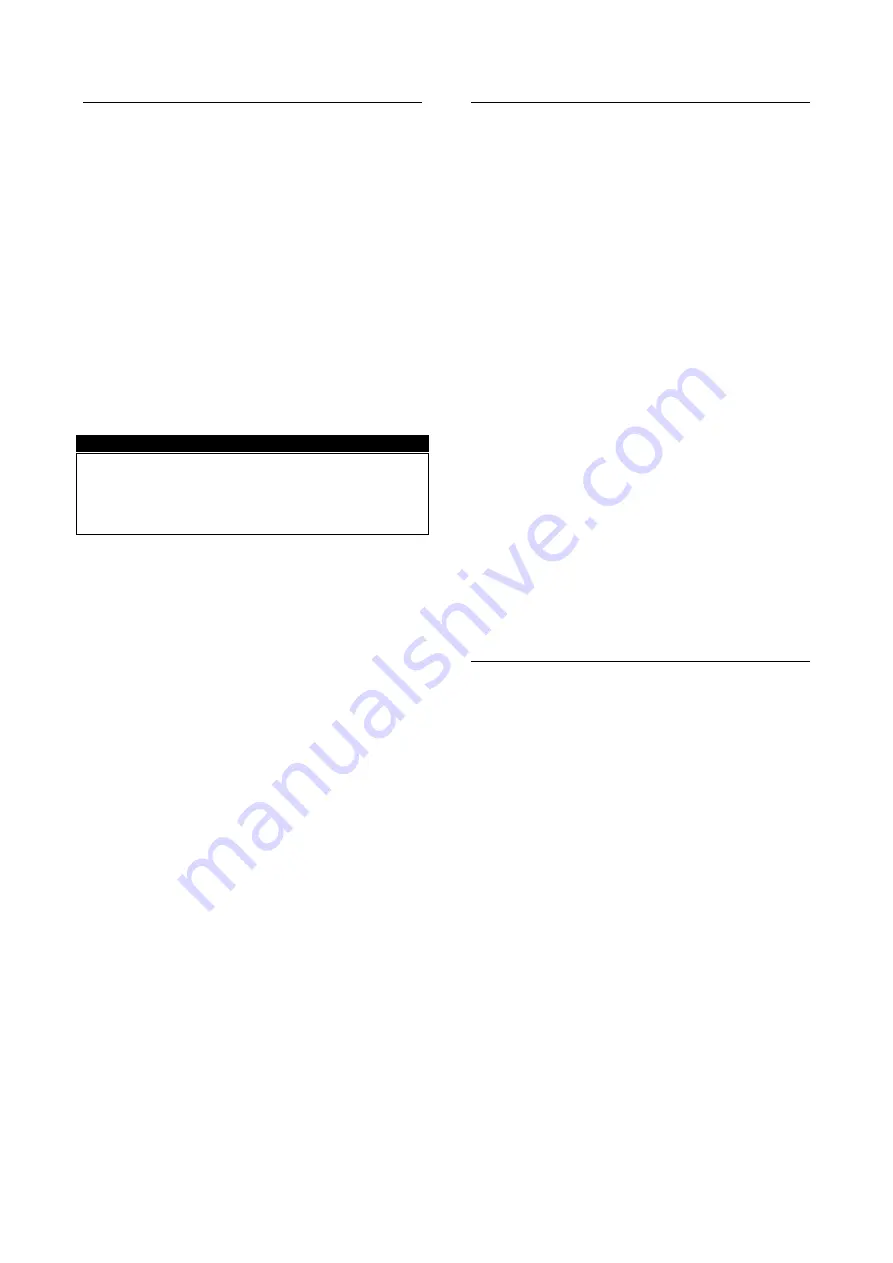
14
Operation
Safety key
The motor unit has a safety key, which is placed under
the battery cover. If the safety key is removed, the
power is disconnected, and it cannot start. See Fig. 6
(21)
It is always recommended to remove the safety key:
•
When the lawn mower is left unattended (to
prevent uninteded start, e.g. by minors)
•
Before clearning and maintenance
•
Before remove grass blockings
Remove the safety key, by pulling it out.
Insert the safety key to start the motor.
Place the key in the correct way!
Cutting height adjustment:
The mower has 6 different heights. The cutting height
ranges from 25 mm to 65 mm.
Important! Use with both batteries at the same time.
In order to cut with full power, the lawn mower must be
used with both batteries installed.
Make sure both batteries are fully charged before use.
The lawn mower cannot be used, if one battery is
removed or it is almost drained for power.
Start
Never start the mower directly on long grass.
1. Open the batttery cover (6) on the motor unit, slide
in the battery (9) and click it in place.
2. Make sure the safety key Fig. 6 (12) is inserted.
3. Hold the start button Fig.10 (24) down and activate
the handlebar for engine brake (1) to start the
motor. Release startbutton once started.
Note:
As long as operating the mower, the handlebar
for engine brake must be engaged.
Stop:
1. Release the engine brake to turn off the mower and
the engine
Note: The blades will still rotate at up to 2 seconds
after stopping.
Remove the battery
To remove the battery, press battery release button (12)
and pull it out.
Working time
The working time per full charge depends of several
factors, like length of grass, cutting height and cutting
methods (mulching or collection).
Variable motor-speed
The motor adjusts the blade-rotations to match the load
(length and thickness of the grass). You will therefore
hear that the motor-speed will go up/down while cutting
the grass. This is perfectly normal and ensures a more
energy-effective use of the power from the battery.
Indicator for full grass collector.
The practival indicator Fig.8 (22) on the grass collectors
tells, when it is full of grass and need to be emptied.
Blade
Inspection of the blade
•
Tilt the mower with the front upwards.
•
Inspect blade for damage, cracks or excessive rust
or corrosion.
•
Check that the blade bolt is tightened.
Note:
A dull blade can be sharpened! But a blade that
is worn, bent, cracked or otherwise damaged must be
replaced.
Removing the blade: See Fig. 11
If you remove the blade to sharpen or replace it, you
must use a torque wrench and some heavy gloves to
protect your hands.
1. Loosen the blade bolt (25) using a 14 mm hexagon
spanner. Use a piece of wood to prevent the blade
from turning around.
2. Remove the bolt, washer, blade and blade holder
in that order
3. Sharpen or replace the blade.
4. Insert the blade holder, blade, washer and bolt in
that order.
5. Tighten the blade bolt with 35-40 Nm with 14 mm
hexagon spanner. Use a piece of wood to prevent
the blade from turning around.
Warning
: A blade must be sharpened so it is in
100 % balance, otherwise it may cause vibrations that
could damage the engine. Damage to engine due to
faulty sharpening is not covered by warranty. We
therefore recommend letting a service center sharpen
the blade.
Storage and maintenance
Maintain your lawnmower:
Check all bolts, screws,
nuts and deck. Dismount the blade and the belt plastic
cover for regular cleaning. Always make sure that the
blade is sharp. Keep the motor unit free from grass and
dirt.
It’s a good idea to take your lawn mower to an
annual service check with your authorized service
dealer. See your nearest service center at
www.texas.dk.
Storage:
After use the lawnmower kept in a dry and
clean room. Clean the machine after every use. Grass
and dirt must be removed from the underside of the
deck. Remove the safety key before cleaning and
storage.
Winter storage:
Spray silicone lubrication into the
cables and move them.
Finally, clean the mower thoroughly. Dip a cloth in oil
and luricate metal parts to prevent rust. For storage of
battery, see “Battery” section.
Summary of Contents for 90063272
Page 3: ...3 Fig 3 Fig 4 ...
Page 4: ...4 Fig 5 Fig 6 Fig 7 ...
Page 5: ...5 Fig 8 Fig 9 Fig 10 ...
Page 6: ...6 Fig 11 ...




















